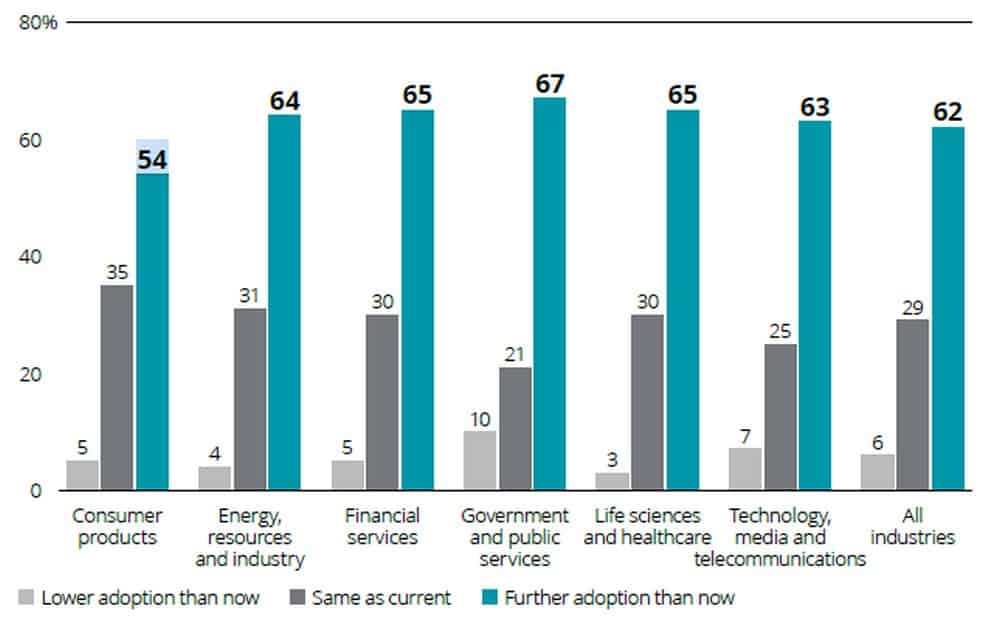Enterprises of all sizes are seeking ways to modernise their operations. Emerging as a critical element in the digital transformation tech stack are cloud databases. Having the right cloud database can help address the range of applications companies depend on and those that they build, from the cloud to mobile and edge.
For companies aspiring to provide better and more personalised customer experiences, using a DBaaS (database as a service) should be a key consideration.
Fundamental to the business needs
Deloitte reports that in Asia Pacific, cloud services will contribute US$160 billion to the economy from 2020 to 2024, across various industries. The same report also highlights that cloud adoption in the region will affect industries differently, and vary according to current digital investments, level of disruption and intensity of competition in their respective industries.

Source: The cloud imperative, Deloitte July 2021
With 54% of Asian businesses primed and focused on cloud technology for the next phase of growth, businesses can make the most of their data and augment their current business models.
Enterprises depend on databases to keep pace with an increasingly digital world. A French luxury retail vendor, for example, is now able to offer more and faster transactions online, creating experiences designed to meet customer needs by providing salespeople real-time access to their product catalogue.
A global apparel and retail company that delivers premium styling with over 1,800 retail stores worldwide was able to launch its first digital showroom with the power of a cloud database. The scalable database technology ensures high performance, offline availability and real-time data synchronisation for a showroom experience that runs smoothly even if the internet goes down.
In another real-world example, an international airline with a crew of over 40,000 comprising - ground crew, aircrew, schedulers and other operations staff operates over 1.5 million flights annually.
They have digitised their processes all the way from booking, flight scheduling and ground operations by modernising their stack on a cloud database that extends all the way from the cloud to the edge.
This allows their ground crews on the tarmac to collaborate and work even without internet connectivity with simple device-device data synchronisation. Such changes have not just helped operations but also reduced the time it takes to book a ticket and at the same time substantially lower the network cost for the company.
Using the edge and cloud capabilities in its cloud database, the airline has digitised its pre-flight check process by syncing data across crew tablets in real-time—even when devices are disconnected or when an internet connection is non-existent.
Another leading travel industry company is providing faster booking times and requiring fewer data to be transferred for its more than 3 million mobile app users.
Databases must scale affordably
Companies need to operate at a constantly increasing scale—more data, more speed, and more customer touchpoints. IDC estimates that there will be 41.6 billion connected IoT devices, or "things," generating 79.4 zettabytes (ZB) of data in 2025.
The only way to keep up with this moving train is to have a cloud database that can handle huge amounts of data and can do so with extreme agility and low latency.
There are two types of scaling: horizontal (adding more nodes to a system) and vertical (adding more resources to a single node). Relational databases of old are not elastic, as in they cannot scale based on the volume and velocity of data access.
They are built more like aeroplanes. If you want to add 20 more seats to your flight, you must get a new plane which is built with 20 more seats. In other words, you can't extend this plane to accommodate 20 more passengers. This is vertical scaling.
On the other hand, cloud databases are more like trains. If you want to add 20 more seats to your popular train route, all you must do is add another coach. You can further customise the train by adding more dining cars, cargo cars or passenger cars based on the route and payload specific to that route.
At the end of the day, it all boils down to how the database performs and fits into the business' rising operation costs and long-term infrastructure investment. According to Gartner, scale-focused companies reach a 10.6% higher operation productivity than rivals.
With a distributed NoSQL database that scales to meet your performance demands at an affordable cost and with fewer servers, businesses are primed to support more concurrent users on demand.
Provide database technology they’ll love
Developers are building applications that will push their companies forward as a digital enterprise––and a cloud database makes the process easier and more efficient. A NoSQL cloud database can power web, mobile and IoT applications while enabling developers to use languages and processes they already know and love. But why is a distributed NoSQL database the top choice for developers? Developers appreciate the speed, accuracy and low latency it offers.
A NoSQL database supports agile development to keep pace with evolving application requirements. The entire NoSQL movement came about to solve the schema rigidity of relational systems and to solve the object-relational impedance mismatch.
With NoSQL databases, the friction between front-end app developers and back-end database-facing developers is over. There are no separate data model changes and object model changes.
The application and object model change is automatically reflected in the database. This eliminates the need for committees and approvals to get simple data model changes into production. For the first time, databases are now within the CI/CD pipeline.
This greatly improves the agility of deployment as well. Just as important as development agility is the ability to operate a fully geo-distributed database with continuous availability. Without both these, companies are unable to speed up their 'time-to-market'.
Cloud databases' competitive edge
Gartner predicts that more than 85% of organisations will embrace a cloud-first principle by 2025 and will not be able to fully execute their digital strategies without the use of cloud-native architectures and technologies.
Cloud databases can be the catalyst for enterprises to transform digitally in an era where scalability is a necessity, even during economic uncertainty. Throughout the ups and downs in the economy, business resiliency is of utmost importance––and the right database can support this.
As digital transformation picks up steam, more and more applications are operating both at planet scale and at the edge. Distributed cloud databases that can meet the needs at both ends of this spectrum are the ones that businesses are increasingly looking to solve their next-generation problems. We are excited to be part of this journey with our customers and we look forward to even more foundational innovations to meet their needs of tomorrow.





